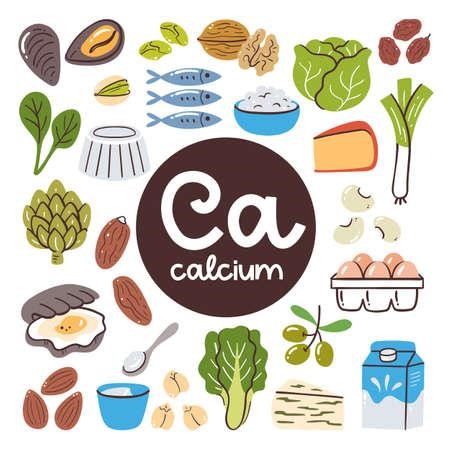When conducting diet teaching for a client who was diagnosed with hypocalcaemia, which foods should the nurse encourage the client to eat? (Select all that apply.)
Pickles, blackberries, seeds.
Buttermilk, spinach, milk.
Pickled olives, spam, nuts.
Fresh meats, fresh turkey, fresh chicken.
Cheese spread, processed cheese, cheese.
Correct Answer : B,D,E
Choice A
Pickles, blackberries, seeds are not appropriate. None of these foods are particularly high in calcium. Pickles and blackberries are not significant sources of calcium, and while some seeds contain calcium, they are not among the best sources.
Choice B
Buttermilk, spinach, milk: These foods are good sources of dietary calcium is appropriate. Milk and buttermilk are commonly consumed dairy products that contain calcium. Spinach, while not as high in calcium as dairy products, still contributes to calcium intake.
Choice C
Pickled olives, spam, nuts are not appropriate. These foods are not known for being high in calcium. Additionally, some foods like pickled olives and spam may have high sodium content, which can affect calcium balance.
Choice D
Fresh meats, fresh turkey, fresh chicken is appropriate. Fresh meats, such as turkey and chicken, provide some calcium, although not as much as dairy products. They also contribute to overall nutritional intake.
Choice E
Cheese spread, processed cheese, cheese is appropriate. Dairy products like cheese, especially processed cheese and cheese spread, are good sources of calcium. They can be effective in increasing calcium intake to address hypocalcaemia.

Nursing Test Bank
Naxlex Comprehensive Predictor Exams
Related Questions
Correct Answer is B
Explanation
Choice A
Potatoes are incorrect. Potatoes are high in carbohydrates and can cause a rapid increase in blood sugar levels, so they are not the best choice for someone with diabetes trying to avoid refined sugars and carbs.
Choice B
Avocado is correct. Avocado is a good choice for someone with Type 2 diabetes who wants to avoid refined sugars and carbohydrates. Avocado is a healthy source of monounsaturated fats, fibre, and various vitamins and minerals. It has a low glycaemic index and doesn't significantly raise blood sugar levels, making it a suitable option for people with diabetes.
Choice C
Grapes are incorrect. Grapes are a fruit with natural sugars, and although they contain fibre, they can still cause spikes in blood sugar levels.
Choice D
Pretzels are incorrect. Pretzels are usually made from refined flour and are high in simple carbohydrates, causing rapid spikes in blood sugar levels. They are not a good choice for someone with diabetes aiming to avoid refined sugars and carbs.
Correct Answer is ["A","C","D","E"]
Explanation
Choice A
Grilled salmon is correct. Salmon is a good source of protein and healthy omega-3 fatty acids. Protein is essential for wound healing and tissue repair, while omega-3 fatty acids have anti-inflammatory properties that can help with the healing process.
Choice B
Soda crackers is incorrect. Soda crackers are not particularly nutrient-dense and may not contribute significantly to postoperative healing. While they might be a bland option for settling the stomach, they do not offer the same nutritional benefits as the other selected options.
Choice C
Scrambled eggs are correct. Eggs are a good source of high-quality protein and contain essential nutrients like vitamin D and choline. Protein is crucial for tissue repair and recovery, and vitamin D supports bone health.
Choice D
Baked chicken is correct: Lean protein sources like baked chicken are important for wound healing and maintaining muscle mass. Protein helps the body repair and build new tissues.
Choice E
Flavoured gelatine is correct. Flavoured gelatine can be a soft and easily digestible source of hydration and calories. It's also a good option for someone recovering from surgery as it provides some energy and can be gentle on the digestive system.
Whether you are a student looking to ace your exams or a practicing nurse seeking to enhance your expertise , our nursing education contents will empower you with the confidence and competence to make a difference in the lives of patients and become a respected leader in the healthcare field.
Visit Naxlex, invest in your future and unlock endless possibilities with our unparalleled nursing education contents today
Report Wrong Answer on the Current Question
Do you disagree with the answer? If yes, what is your expected answer? Explain.
Kindly be descriptive with the issue you are facing.
